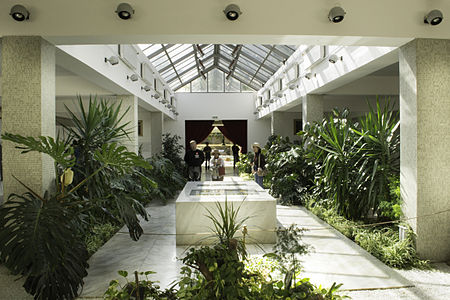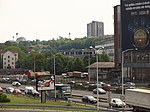House of Flowers (mausoleum)
1975 establishments in YugoslaviaBuildings and structures completed in 1975Buildings and structures in BelgradeInstances of Lang-sr using second unnamed parameterJosip Broz Tito ... and 3 more
Mausoleums in SerbiaSavski VenacSocialist Federal Republic of Yugoslavia

House of Flowers (Serbian: Кућа цвећа, romanized: Kuća cveća; Croatian: Kuća cvijeća; Macedonian: Куќа на цвеќето; Slovene: Hiša cvetja) is the resting place of Josip Broz Tito (1892–1980) and Jovanka Broz (1924–2013), the President and the First Lady of the Socialist Federal Republic of Yugoslavia. It is located on the grounds of the Museum of Yugoslav History in Dedinje, Belgrade, Serbia.
Excerpt from the Wikipedia article House of Flowers (mausoleum) (License: CC BY-SA 3.0, Authors, Images).House of Flowers (mausoleum)
Михаила Мике Јанковића, Belgrade Београд (Савски венац) (Savski Venac Urban Municipality)
Geographical coordinates (GPS) Address Phone number Website Nearby Places Show on map
Geographical coordinates (GPS)
| Latitude | Longitude |
|---|---|
| N 44.786666666667 ° | E 20.451666666667 ° |
Address
Музеј Југославије
Михаила Мике Јанковића 6
11000 Belgrade, Београд (Савски венац) (Savski Venac Urban Municipality)
Central Serbia, Serbia
Open on Google Maps







